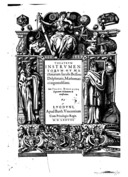
Besson (1578)
Besson, Jaques. Theatrum Instrumentorum et Machinarum (Lugduni [Lyon]: Apud Barth. Vincentium, 1578). Besson shows two swashplate lathes.
This book has been digitized by Google Books from the copy at the Complutense University of Madrid. The icon at left links to a local copy of that digitization.
There is a much nicer digitization available online at the Dibner Library of the History of Science and Technology at the Smithsonian Institution, but you have to read it there: http://www.sil.si.edu/DigitalCollections/HST/Besson/besson.htm
Here are three images of lathes extracted from the Google / Complutense University copy:
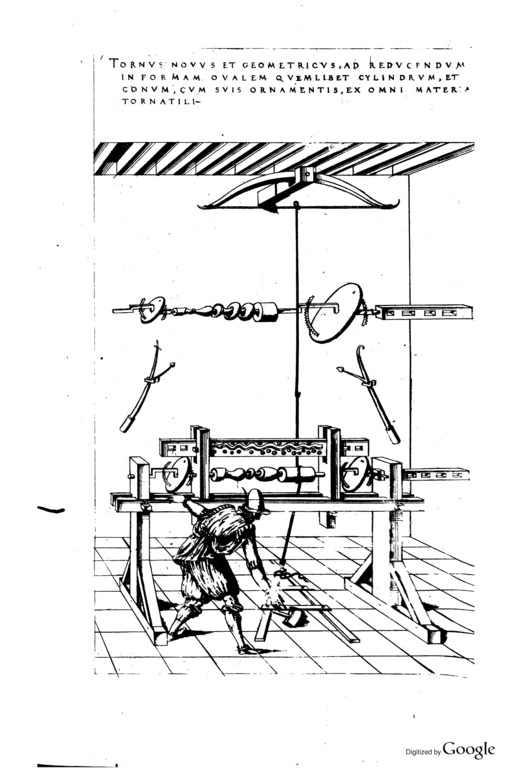

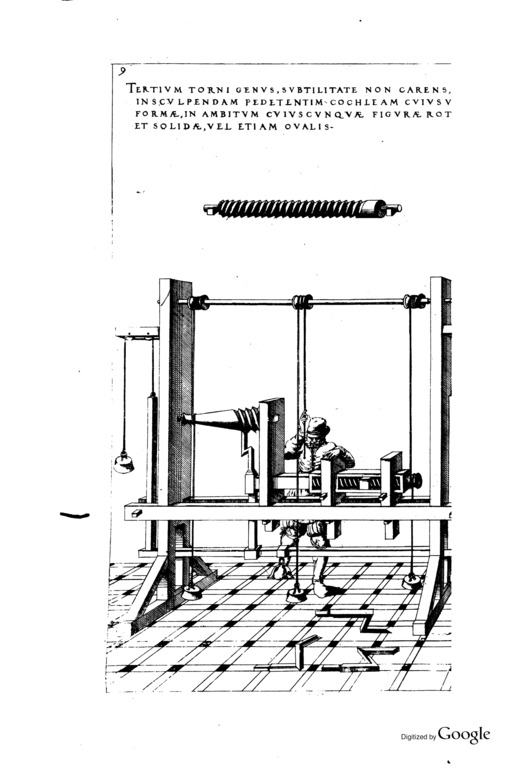
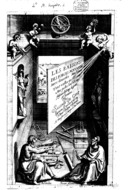
De Caus (1615)
De Caus, Salomon. Les raisons des forces mouvantes. ( In the delightful late Renaissance tradition, this is a treatise on everything from basic mechanics to how to make garden fountains to squirt your friends. On page images 66-67 of the PDF at left, he describes and illustrates a lathe which allowed the headstock to move against cams - John Edwards has identified this as "an early illustration of the principle of the rose engine lathe" (in his A Short History of Turning: http://www.turnersco.com/index.php/the-craft/a-short-history-of-turning for The Turners' Company (the Worshipful Company of Turners.))
This book has been digitized by Google Books from the copy at the Bavarian State Library. The icon at left links to a local copy of that digitization. Most annoyingly, however, the original is scanned in color (which reproduces the nuances of analog monochrome images well) but the PDF Google allows you to download is a bi-level black and white version which loses much of the clarity and detail of the original.
Google has also digitized this from the copy at Stanford University. However, Stanford's "original" itself would appear to be a photocopy obtained via the Library of Congress. Because of this, this version is not of as high a quality as the scan of the Bavarian State Library copy. For the sake of completeness, here is a local copy of it: de-caus-1615-les-raisons-des-forces-mouvantes-google-stanford.pdf
Here is the eccentric-turning lathe from the Google digitization of the Bavarian State Library copy. It is a relatively high-resolution image (if you click through to the bigger image, it is 5924x8788 pixels), but because it has been reduced to a bi-level image much of it is illegible.
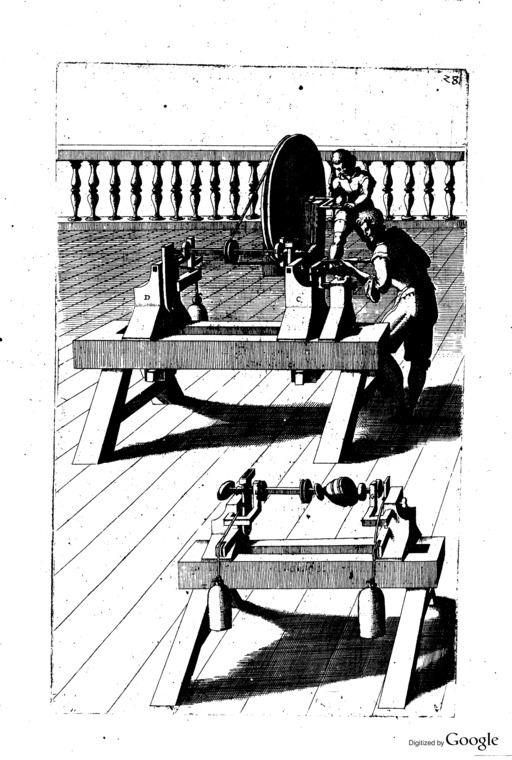
Here, in two parts, is the same public domain image as presented on the Google Books website. It is much lower resolution, but because it is in color you can actually discern a bit more about these machines:
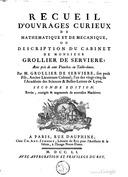
Grollier de Servière
Recueil d'ouvrages curieux de mathematique et de mechanique, ou description du cabinet de Monsieur Grollier de Serviere[sic, 'e' not 'è'] . (Paris: Ch. Ant. Jombert, 1751) Nicolas Grollier de Servière lived from 1596 to 1689, but the account of his work was published by his son in the 18th century. It's a fascinating work in many respects (I first encountered it in an earlier study of rolling ball clocks). For the present purposes, though, it is primarily a catalog of early and very elaborate ornamental turning of the styles accomplished before the Holtzapffels' later inventions of various cutting frames (that is, it concentrates on elaborate form more than elaborate surface ornament).
This book has been digitized by Google from the University of Ghent copy. The icon at left links to a local copy of that digitization.
The texts and images from Google Books reprinted and/or extracted-from here are in the public domain. As used here they remain in the public domain.
All portions of this document not noted otherwise are Copyright © 2012 by David M. MacMillan and Rollande Krandall.
Circuitous Root is a Registered Trademark of David M. MacMillan and Rollande Krandall.
This work is licensed under the Creative Commons "Attribution - ShareAlike" license. See http://creativecommons.org/licenses/by-sa/3.0/ for its terms.
Presented originally by Circuitous Root®
Select Resolution: 0 [other resolutions temporarily disabled due to lack of disk space]